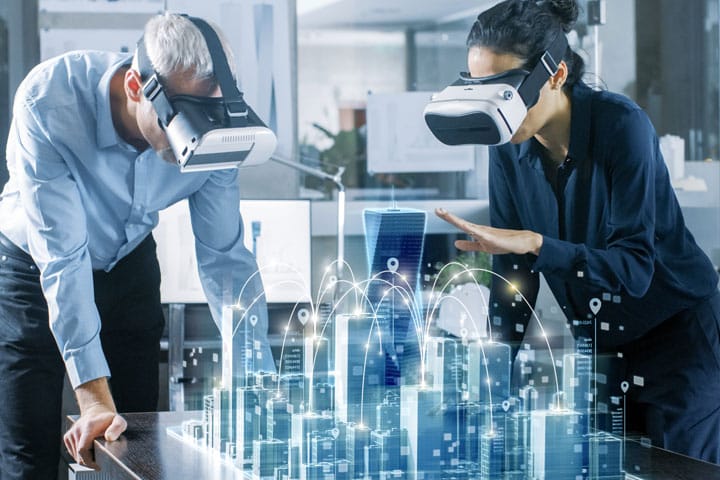How Virtual Reality is Changing Engineering?
If we talk about the latest technologies, we could not but mention virtual reality. Nowadays, this topic has become a household name in a variety of industries and every person has already heard about it somehow. We are bombarded with VR news almost from all media channels including radio, TV, web resources, and so on. However, do we often question how VR solutions help different fields?
In this short article, we’re going to explore how virtual reality is brought to benefit engineering and whether it will become the next revolution. For more info on how to apply web and native VR technologies, read this article and get valuable insights!
Definition of Virtual Reality
So, what is the right scientific definition of Virtual Reality? It is generally defined as a computer-generated environment, which simulates a user’s physical presence in an artificially created world and allows them to interact with those virtual surroundings. It also aims to recreate the real world through the monitor and provide users with an immersive 3D visual experience.
Thanks to the appearance of Virtual Reality, a lot of spheres have already taken advantage of it. Today this technology is applied to healthcare, education, culture, architecture, ecology, and engineering. From guided museum visits to the dissection of a muscle, VR allows us to cross boundaries we set in our minds and really go beyond those limits.
Also, Read: Safety Implications of Robots at Work
How Virtual Reality Can Benefit Engineering
If you’re already curious, stay here, because now we will analyze more deeply how virtual reality can benefit engineering and bring it to a brand-new level. Let’s look at how all these began.
For the first time, the VR technology was applied in design engineering by the automotive and aerospace sectors to generate product prototypes faster and at an affordable price. Now, these prototypes can be visualized in a real environment, so engineers can interact with them, and can even modify the design from inside the model. This gives a possibility to have a better understanding of how the product functions and ameliorate the design before it is passed on to manufacturing.
Design engineers can also use Virtual Reality to spot the product`s weaknesses and fix them before a physical prototype is made. In such a way, virtual reality allows saving time and money for the company. If these new technologies had been invented in 1899, the Wright brothers would not have faced so many problems designing the world’s first airplanes.
To explore the effect of VR technology on engineering to the fullest, we created a list of some work sectors, where it helps and improves the quality of work.
1. Employee Training. We begin our list with the first and foremost important step in the engineer’s daily work training. It’s not a secret that the work of an engineer is not simple and sometimes it might become dangerous. Training newcomers, especially those who are only starting their career in engineering, it might appear to be difficult: you want to share all of your knowledge and skills, but you also don’t want to put their lives at risk.
And that is where virtual reality comes in handy. It offers a safe and controlled space, where you can teach the new employees before they get down to actual work. Newcomers are not afraid of making mistakes. On the contrary, they can learn from their errors and gain essential skills and knowledge.
2. Foster Collaboration in Teams. Improvement of collaboration between engineers, designers, and clients is the result of advanced VR technologies. Clients often face difficulties in visualizing the result of their projects based on drawings and blueprints.
Luckily, VR technology has provided design engineers with the possibility to interact and cooperate with their clients and, allow them to visualize their projects from concept to design and prototype. Furthermore, if a client wants to make changes to the project, in this case, they can easily communicate with their designer to make sure they are on the same page.
3. Gain Competitive Advantage with VR. It’s a well-known fact that the engineering area can be very competitive, this means businesses are always trying to use modern technologies to stay ahead of the game.
If your business has not adopted virtual reality yet, it’s only a question of time when VR software will disrupt industries. Virtual reality is one of the most exciting new technologies that is creating huge modifications and improvements in the engineering sector.
Overall we can confidently state that VR technology is a developing technology, which means this advanced field is only starting to gather momentum. This year VR software $1.5bn and Goldman Sachs predicts that by 2025 it could go up to $4.7bn in. Thus, engineering is going to benefit from VR more, which will result in higher productivity, better collaboration in the team, and enhanced performance.

